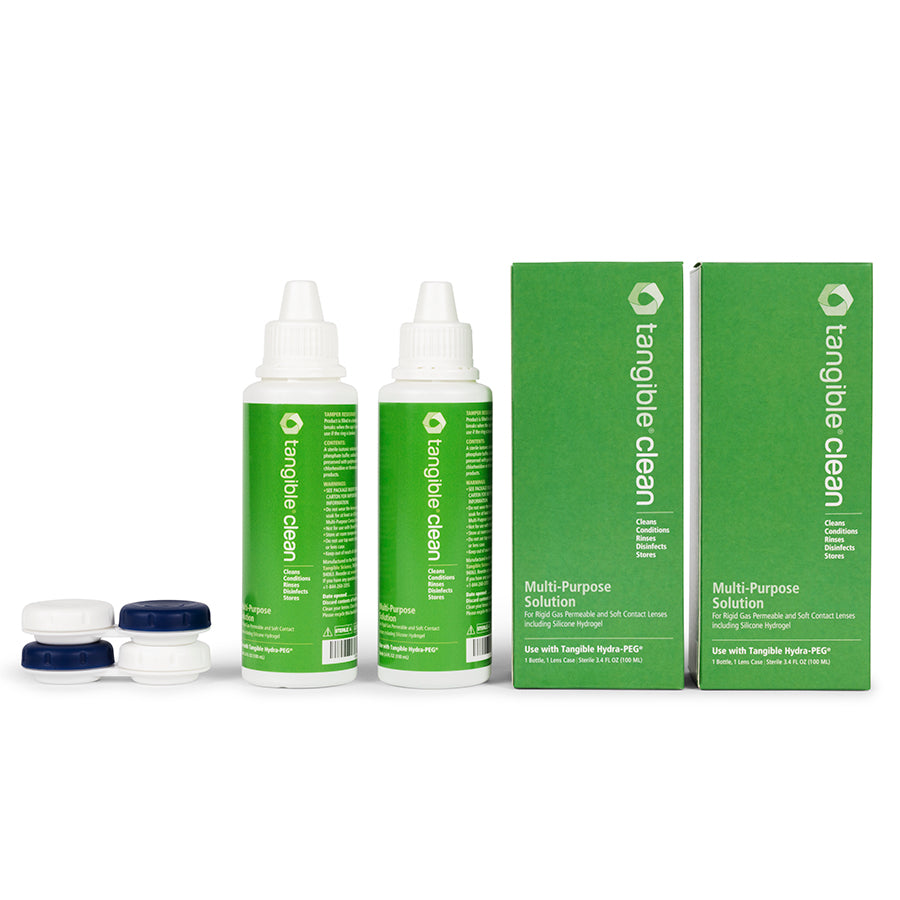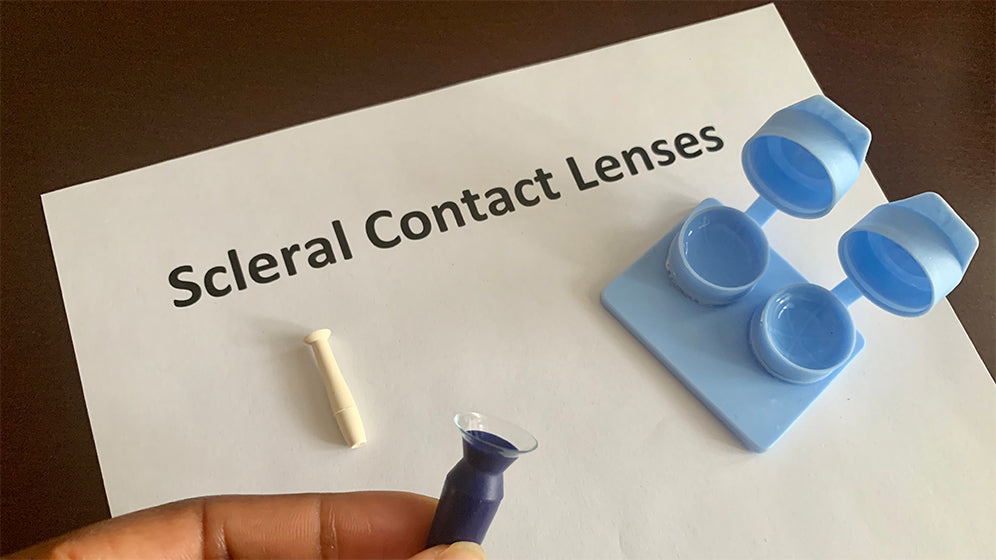Your cart is empty
Already have an account? Log in to check out faster.

Everyone’s scleral lens journey is different. Whether you’ve been prescribed scleral lenses for keratoconus, dry eyes, or other conditions, it can take a few weeks to adjust.
Here are some tips to help shorten the adjustment period for new wearers and give seasoned wearers some new suggestions and reminders.
Always wash and dry your hands before handling your scleral lenses. Good hygiene is essential in preventing eye infections and other potential complications.
If your eyes look or feel “different,” do not insert your lenses. Use backup vision correction and call your practitioner to ensure you are not developing an eye infection, in which case, you should not wear contact lenses.
When make-up, lotions, and other skin care products come in contact with your scleral lenses, it can impact the quality of vision and be uncomfortable. If you think you handled your lens with make-up or skin care residue on your fingers, clean and rinse your lens before inserting. If you insert your lens and it stings or looks cloudy, there could be makeup or other residues on the lens. Remove your lens, rinse, and reinsert.
Even the best fitting scleral lenses will not feel good if they are not cleaned and cared for properly. Follow the recommendations of your practitioner for your cleaning products and routine. It might seem tedious at first, but the effort will pay off with great feeling lenses!
Check out our care tips page for our approved solutions and full lens care instructions: https://tangiblescience.com/pages/care-tips

A common problem for many patients, especially when they are new to scleral lenses, is inserting the lens without air bubbles. Filling up the lens with preservative-free saline (like Tangible Fill) until it is almost overflowing is recommended to avoid this. It should look like an ice cream cone! Overfilling the lens ensures you have enough saline left in the bowl of the lens, even if some spills out as you move it toward your eye.
Tiny bubbles, great for champagne, not for scleral lenses! Pay close attention to how your lens feels. It might feel just slightly different or uncomfortable. Look in the mirror; sometimes you can see bubbles under the lens. If you suspect there is a bubble under your lens, remove it and reinsert it ensuring to overfill the bowl with saline.
A moist lens always feels better and performs better than a dry lens. If you use computers or other devices often, you might find your eyes feel dry, like you need to blink more frequently. Working outside or in dusty environments can also produce dryness, as well as medications you may be taking for other conditions, such as allergies. Ask your practitioner for a recommendation for rewetting drops. Many recommend a preservative-free drop, and most can be purchased from your practitioner or local store. Don’t forget to keep your drops with you!
Pro-Tip: Ask about Tangible Hydra-PEG!
The Tangible Hydra-PEG coating is permanently bonded to the surface of a scleral contact lens. It enhances the comfort of your lenses by increasing the surface wettability, reducing deposits, and decreasing scleral lens fogging. If you have allergies, dry eyes, use a computer or device most of the day or are new to scleral lenses, Tangible Hydra-PEG is the game changer you have been looking for! Ask your practitioner for more information, and check out the benefits below.
After your initial adaptation period of building your wear time, you should be able to wear your lenses all day. Keeping your eyes and lenses lubricated will help you wear your lenses all day more comfortably. However, your wearing schedule should ultimately be determined by your practitioner.
It is not recommended that you sleep in scleral lenses. If you forget to remove your lenses before going to sleep on a regular basis, you could develop inflammation and even infection. If you accidentally sleep in your lens, lubricate your eye before removing the lens.
Your practitioner or their staff probably showed you ways to safely insert your scleral lenses. Most will demonstrate with an insertion tool. Several types of insertion tools can be found, with and without suction. There are also insertion rings and other devices that provide light or hold the inserter for you to free up both hands. Always consult your practitioner if you are having trouble with the method they instruct you to use and replace tools every three months.
Clean your contact lens case with your disinfectant solution and wipe dry with a lint-free cloth. Store it upside down with the lids off until the next use. Contaminated contact lens cases have been linked to rare but serious eye infections. The CDC recommends replacing contact lens cases monthly.
The best way to make inserting, removing, and caring for your lenses feel like second nature is to wear them, even if only for a few hours per day. This will give you the opportunity to practice your techniques and learn your routine. Don’t feel discouraged if it takes some time!
Since scleral lenses are custom-made just for you, a few appointments are required to get things just right. And, even after you have perfectly fitting lenses, you’re not alone. Contact your practitioner if something does not feel right or if you have any questions.

Most of the care guidelines above also ring true for Hybrid Lens Wearers. However, since hybrid lenses have a hard center and a soft edge or “skirt”, there are a few differences.
Inserting a hybrid lens is much like inserting a soft lens. Most people prefer to use their fingers to insert them, rather than an insertion tool.
The Tangible Hydra-PEG coating increases the “slippery” factor of hybrid lenses. It contributes to a more wettable surface and more comfort, but can create a challenge for removal. Since you do not use a removal tool, here are some tips to ease the removal process.
Sometimes it is helpful to practice your “technique” by placing your lens on the knuckle of your finger. This will help you to see and perfect the form and placement of your fingers.
Hybrid lenses with Tangible Hydra-PEG should be cared for with Tangible Clean or Clear Care, only.
When purchasing a drop, make sure you look for drops approved for SOFT contact lenses. This is to ensure that the soft skirt of the lens is not adversely affected by non-compatible drops.
Most people can comfortably wear Hybrid lenses all day and follow the recommended 6 month replacement schedule. Based on individual needs, your practitioner may recommend a different wearing or replacement schedule.


If you're experiencing discomfort with your scleral lenses, initiating a discussion with your Eye Care Provider is essential. It may seem... Read more

Now that you have made it home with your scleral lenses, it’s time to care for them. Pretty simple, right?... Read more

Struggling with scleral lens care? You're not alone. This ultimate guide is your one-stop resource for everything you need to... Read more

If you're experiencing discomfort with your scleral lenses, initiating a discussion with your Eye Care Provider is essential. It may seem... Read more

Now that you have made it home with your scleral lenses, it’s time to care for them. Pretty simple, right?... Read more

Struggling with scleral lens care? You're not alone. This ultimate guide is your one-stop resource for everything you need to... Read more
Stay up to date on the top scleral and RGP lens tips from our expert, NCLE certified staff.